Execute Your Journey Strategy
Learning Objectives
After completing this unit, you’ll be able to:
- Set a goal.
- Define your audience.
- Identify and collect data needs.
- Craft your content and channels.
- Map your journey.
Four Main Pillars for the Perfect Journey
When starting your journey strategy, we recommend addressing your preparations in four main areas: audience, data, content, and channel. We go through each of those in this unit. These pillars support your overall goal; address each of these areas before you start mapping your journey. 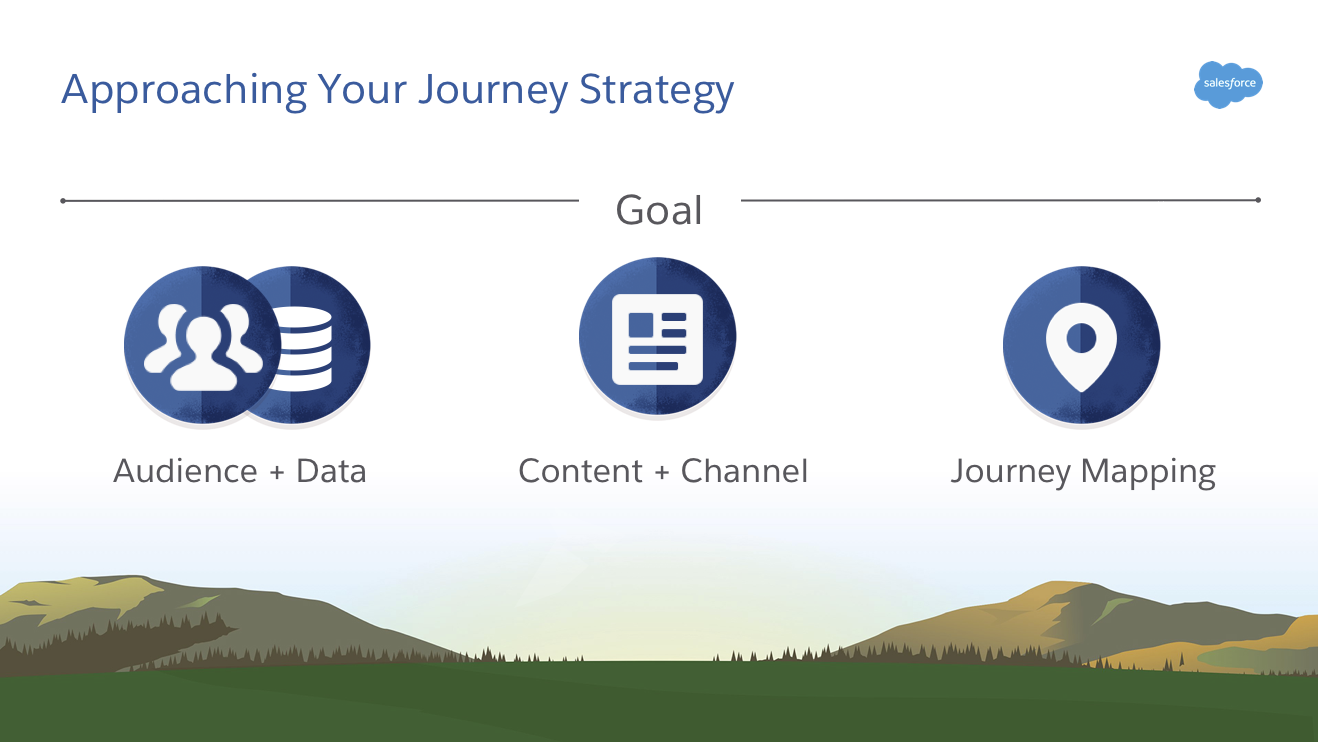
Set a Goal
You first need a high-level goal. Think of this like a New Year’s resolution: It may have good intentions, but is often vague. It sets you on the right path mentally, but it’s not until you make it more specific that it becomes something you can really accomplish.
That high-level goal helps you focus your efforts and can be continually refined as you learn more and nail down your strategy. Here are some examples.
- Acquire new account holders.
- Increase the number of scheduled appointments.
- Improve on-time payments and reimbursements.
- Improve the completion rate of a patient health profile.
- Reduce service calls.
Define Your Audience
When you know who you want to create a journey for, it’s time to do your research and work to really understand the experience of your customers today. This requires that you be brutally honest and truly objective. If you personally are too close to the work, find someone else to do this part: a new team member, an intern, or outside consultant. The point is this: If your customer experience is less than perfect, you need to know it and acknowledge it.
First, know your customer’s lifecycle. If you don’t have a defined lifecycle, start with this template and adjust it to what makes sense for your organization.
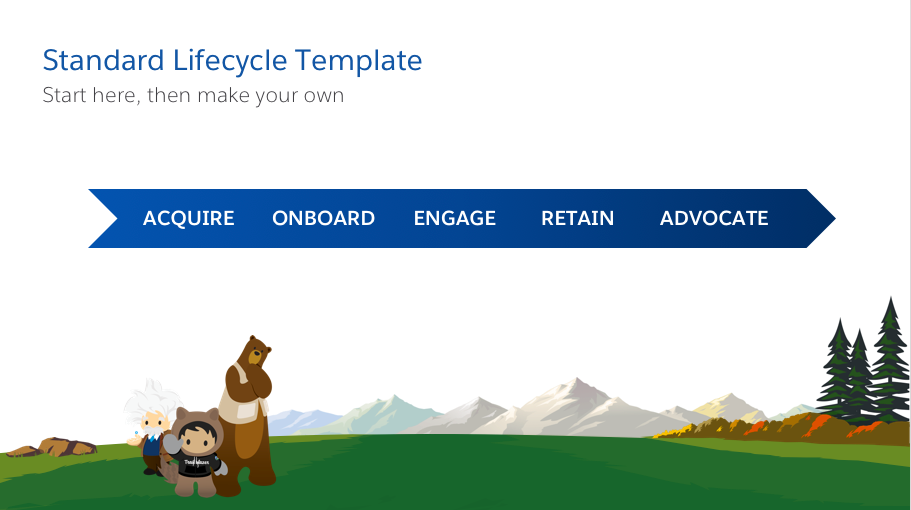
Next, audit today’s customer experience. Here’s a quick checklist to help you become your own customer.
- Document everything.
- Google your brand and market.
- Become a customer of your competition.
- Scour social media.
Finally, identify the moments that matter in your customers’ experience. There are a lot of decision points and key milestones in the customer journey that happen before they ever put an item in a cart, request information, or enroll in your program. You need to know what those are.
Big decisions start with small moments. Be there across all stages of the customer journey, not just when someone is ready to buy, sign up, or donate. Consider four key moment types that represent the full range of user needs. Think about how you can be there for your customer in each moment.
- I-Want-to-Know Moments: Someone is exploring or researching, but not yet in signup mode. They want useful information to help them with their decision. The hard sell is wrong here.
- I-Want-to-Go Moments: People are looking for or are considering a local option. Being there means getting your options in their consideration set in that moment.
- I-Want-to-Do Moments: These may come before or after the purchase. Either way, these are “how to” moments when people want help getting things done or trying something new. Being there with the right content is key.
- I-Want-to-Buy Moments: Someone is ready to buy and may need help deciding what or how to buy. You can’t assume they’ll seek you out; you have to be there with the right information to seal the deal.
Identify and Collect Data Needs
Where do you start? Small. Don’t be discouraged if you have only a small amount of data on your customers—a name and email address alone are a starting place.
1. You can start a journey using whatever data you have at your disposal today. Check your data’s quality, accessibility, and completeness. Ask yourself:
- Where does this data come from?
- What is the source?
- Where does it live?
- How complete is it?
- How easy is it to access and use?
2. After that, list what data you need, whether for this first version of the journey or in the near future. Define the data you’re missing. Ask yourself:
- Does it exist, but is inaccessible?
- Do you need to start collecting it?
3. Finally, create a wish list of what data you want. This will enable you to start collecting it or working with the team who’ll hook you up. Dare to dream about the hard-to-access data points.
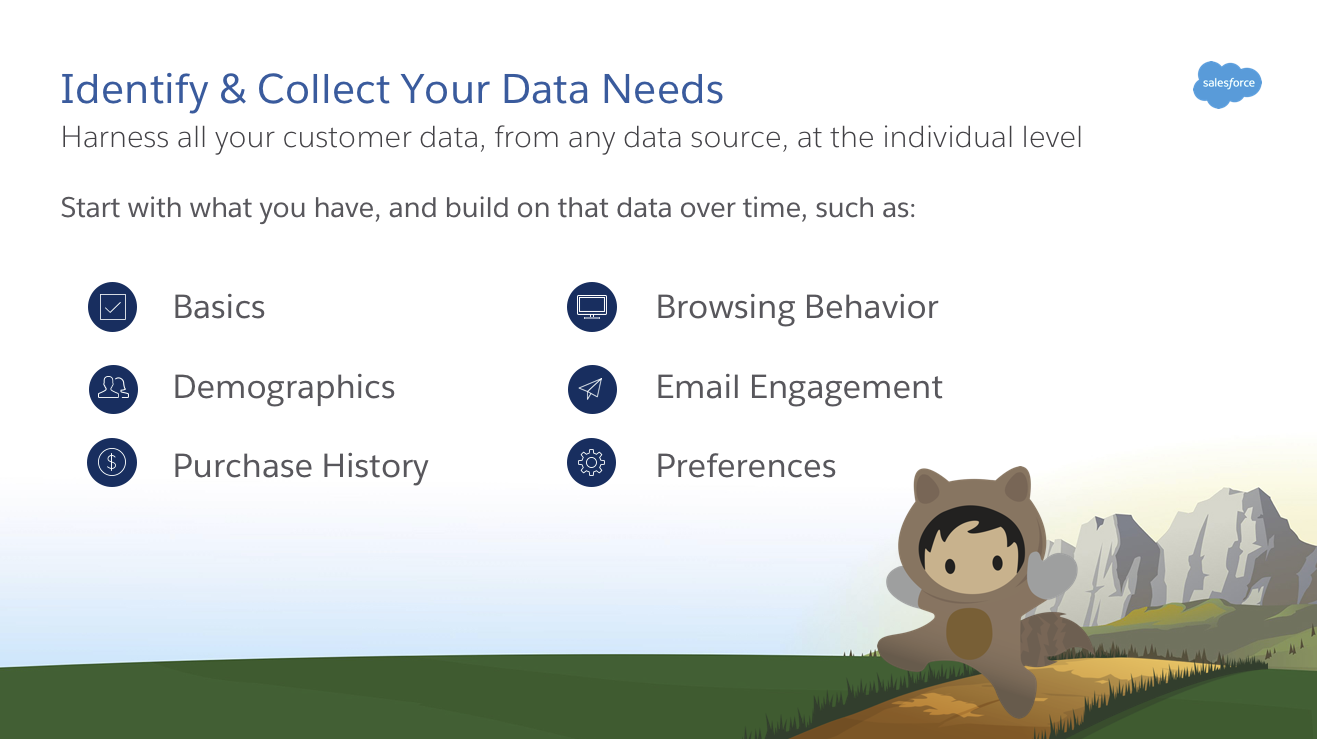
So what’s next? It’s time to work on your content and channels.
Craft Your Content and Channels
The channel is directly tied to the audience you identified. Channel conversations should center around demographic information, situational factors (on the go vs. not), life stages, and urgency of the message.
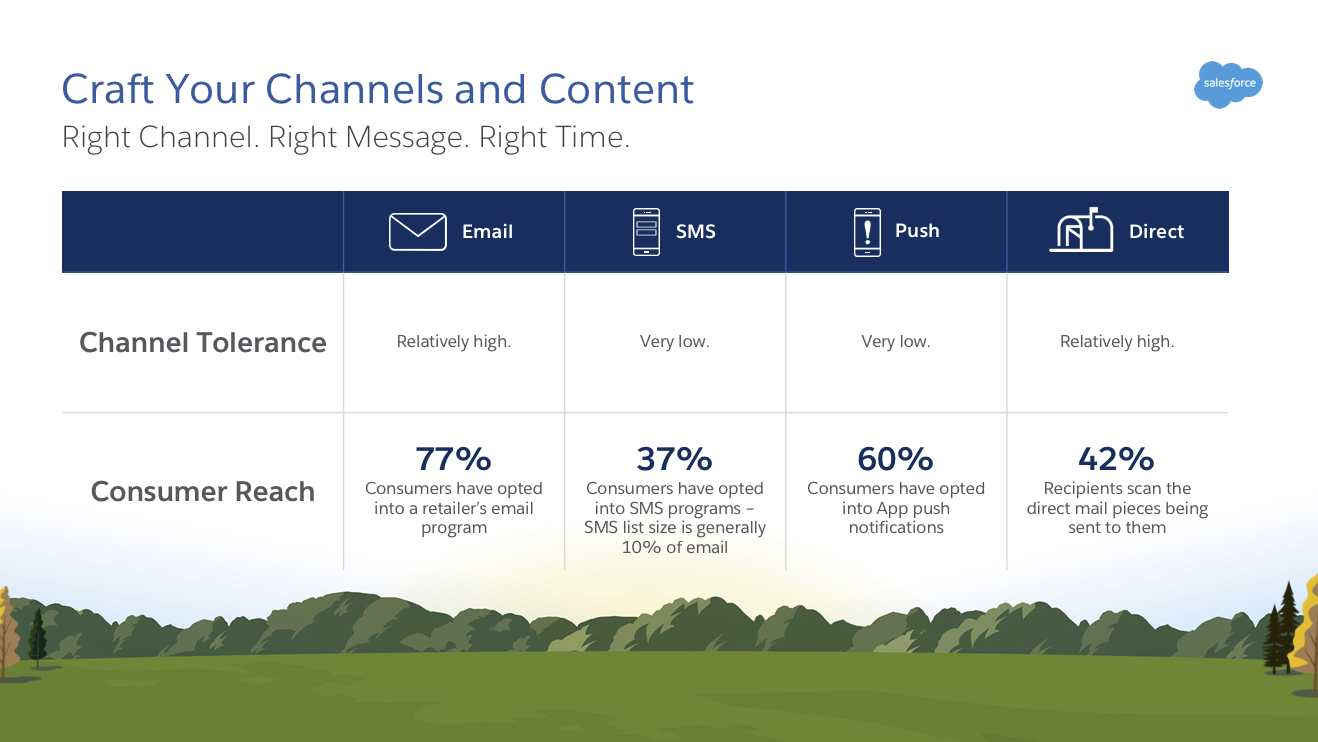
- Email: One bad campaign is often not enough to drive an unsubscribe, as evidenced by low unsubscribe rates. The main concern is “emotional unsubscribe,” where someone just stops opening any email communications.
- SMS: One bad SMS, coupled with the knowledge of an associated data cost, is enough to drive the opt-out.
- Push: One bad push is enough to drive the opt-out, or worse, an app delete.
- Direct: The additional steps it requires to be removed from a physical mailing list compared to digital communications makes it likely that customers will stick around. The concern is capturing recipients’ attention enough to make the higher cost to conversion worthwhile.
Consider a prominent Salesforce customer’s approach.

There are two types of content:
- In-Journey Content: Content is the delivered message itself, that can be consumed without leaving the inbox or screen.
- Outside-Journey Content: Resources the customer navigates to with a click or tap, such as web content.
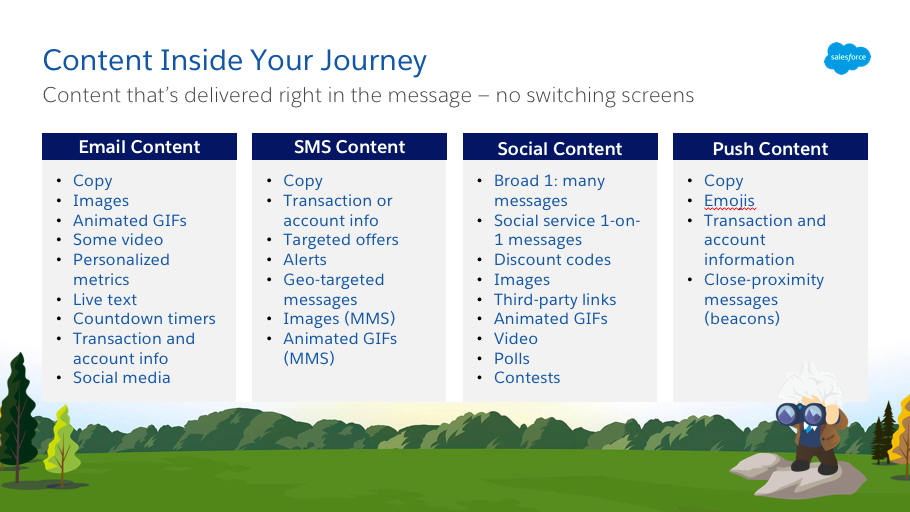
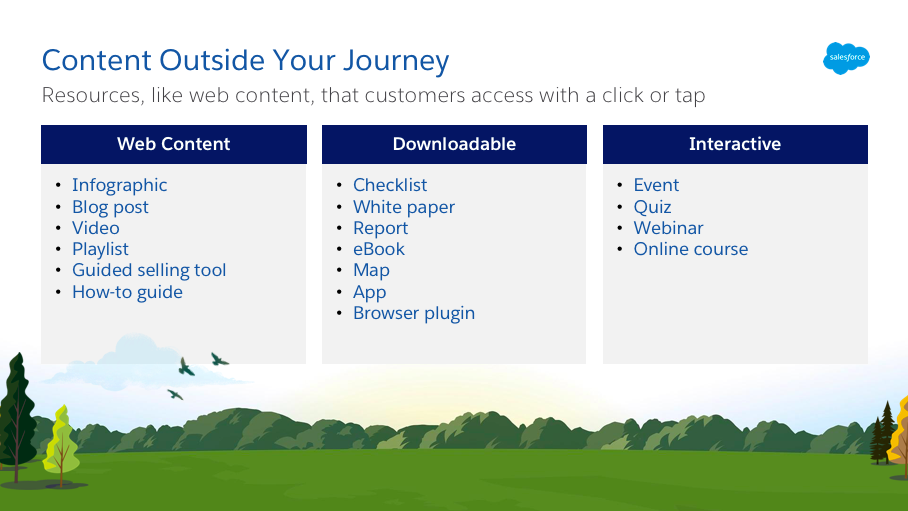
Map Your Journey
So, now you’ve done all the hard work to build what goes into your journey. Now it’s time to map out your journey before putting it into action with a customer journey map.
In the simplest terms, a customer journey map is a diagram of the touchpoints a customer has with your company. The map helps you understand how your customer interacts with your brand at every stage of the customer lifecycle—and how you might improve those interactions and make them more efficient. Here’s an example to get you thinking.

Now it’s your turn!
Next Steps
Where do you start? Small. (Sounds familiar, doesn’t it?) The most important step is to start with what you have and build on it.
- l Have: What content do you already have that will be good to use for this audience and journey?
- l Need: What will you need to create?
- l Want: What kind of content would delight the recipient and assist them during their journey?